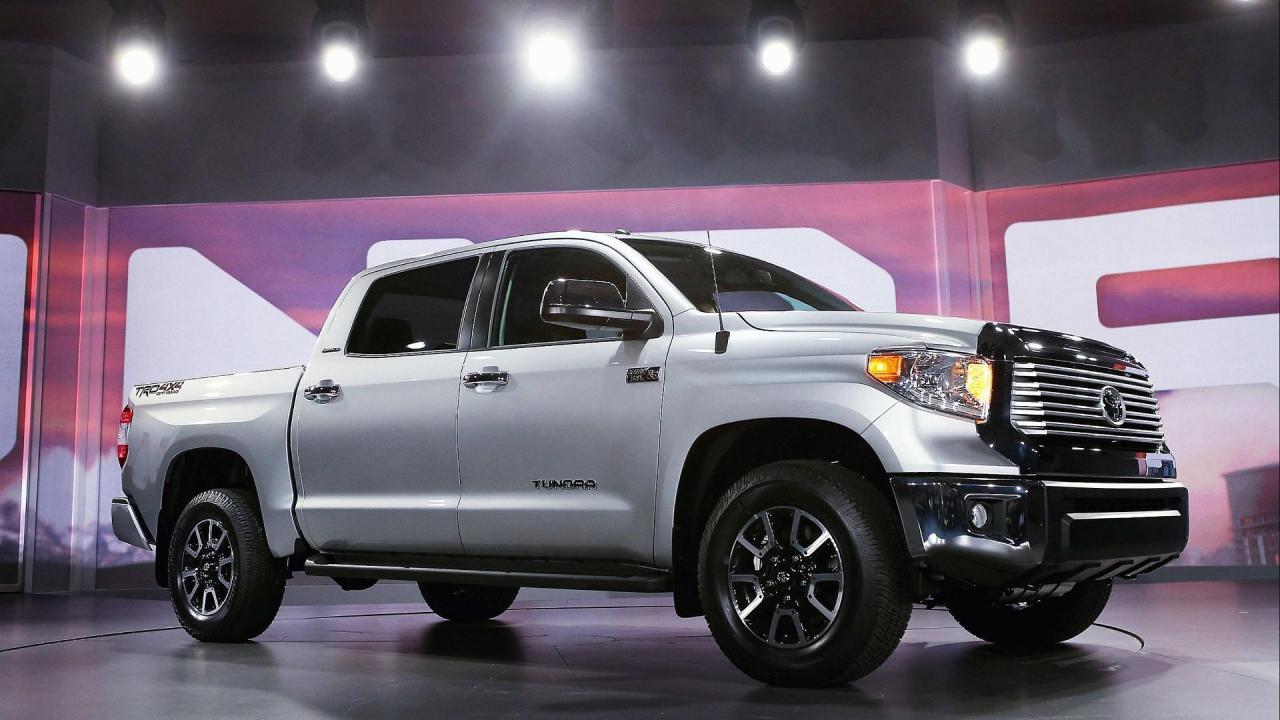A reliable braking system is the cornerstone of vehicle safety. Recently, Toyota issued a major recall for specific Tundra pickup trucks due to potentially defective brake vacuum pumps. A malfunctioning pump can compromise brake assist, lengthening stopping distances and elevating the risk of collisions. This comprehensive guide walks through every facet of the Tundra Safety Pump Recall from its origin and technical underpinnings to owner responsibilities, repair procedures, legal rights, and preventive maintenance. Whether you drive a Tundra or are considering one, understanding this recall is vital for your safety, peace of mind, and long‑term vehicle value.
A. Recall Background and Timeline
A clear chronology helps owners grasp why and when Toyota initiated this safety action:
A. Early Complaints (Late 2024): Several Tundra owners reported a hard brake pedal and reduced braking performance under light vacuum conditions.
B. Manufacturer Investigation (Q1 2025): Toyota’s engineering teams traced the issue to aging vacuum pump gears that wear prematurely.
C. Regulatory Review (March 2025): The National Highway Traffic Safety Administration (NHTSA) opened a probe under Recall ID 25V‑TNDRA to assess field reports.
D. Official Recall Announcement (May 1, 2025): Toyota publicly announced the recall, notifying affected owners via mail and online VIN lookup notices.
E. Repair Campaign Launch (May 15, 2025): Toyota authorized dealers to begin inspecting and replacing vacuum pumps at no cost to owners.
B. Affected Models and VIN Ranges
Not every Tundra is impacted. Identifying eligible vehicles ensures timely remedy:
A. Model Years: 2019, 2020, 2021, and 2022 Toyota Tundra with 3.5L twin‑turbo V6 engines.
B. Drivetrain: Both 4×2 and 4×4 configurations fitted with integrated brake booster pumps.
C. VIN Ranges: Specific 17‑character VIN prefixes starting with “5TF” and “3TFA” through “5TFB,” detailed in Toyota’s bulletin.
D. Production Plant: Tundras assembled at Toyota’s San Antonio, Texas facility between October 2018 and December 2022.
E. Geographic Scope: Vehicles sold or registered in the United States, Canada, and Puerto Rico.
C. Technical Cause of Pump Failure
Understanding the mechanical failure offers transparency and context for repairs:
A. Gear Wear: The vacuum pump contains plastic‑reinforced nylon gears; prolonged high‑load operation can abrade gear teeth.
B. Insufficient Lubrication: Factory grease specifications may degrade under extreme heat, reducing gear lifespan.
C. Air Ingress: Microscopic gaps between the housing and gears allow air leaks, lowering vacuum pressure.
D. Brake Booster Impact: Reduced vacuum impairs the brake booster’s ability to amplify pedal force.
E. Delayed Warning: The onboard diagnostic system does not monitor pump health directly, so no warning light appears until brake feel changes noticeably.
D. Symptoms and Early Detection
Owners should watch for these warning signs to prevent dangerous scenarios:
A. Hard Brake Pedal: Increased pedal resistance, requiring more force to achieve normal deceleration.
B. Longer Stopping Distance: Noticeable delay or reduced braking power from standard speeds.
C. Engine Noise: Unusual whirring or grinding sounds from the pump area during engine idle.
D. Hissing Air Noise: Audible air leaks near the brake booster when pressing the brake pedal.
E. ABS Activation: Unexpected ABS cycling at low speeds due to insufficient hydraulic pressure.
F. Brake Warning Light (Rare): In some cases, the master warning lamp may illuminate after severe vacuum loss.
E. Safety Risks and Incident Reports

Brake assist failures can have serious consequences; real‑world events highlight the gravity:
A. Collision Reports: NHTSA notes at least ten incidents where Tundras experienced degraded braking before minor collisions.
B. Near‑Miss Events: Drivers reported narrowly avoiding obstacles when the brake pedal stiffened unexpectedly.
C. Injury Cases: Two occupants sustained minor injuries from abrupt emergency stops following pump failure.
D. Property Damage: Rear‑end fender benders and parking lot mishaps rose among affected VINs.
E. Consumer Alerts: Enthusiast forums buzzed with owner testimonials urging Toyota to expedite repairs.
F. Toyota’s Repair Procedure
Toyota dealers will execute a standardized remedy at no charge to owners:
A. Vacuum Pump Inspection: Technicians verify gear integrity, lubrication condition, and vacuum pressure levels.
B. Pump Replacement: Defective vacuum pump assemblies are swapped for updated units with reinforced gear materials.
C. Brake System Bleed: A complete brake fluid flush ensures removal of air pockets introduced during pump removal.
D. Software Update: ECU brake‑control software is flashed to refine pump failure detection thresholds.
E. Quality Verification: Post‑repair road tests confirm restored pedal travel and vacuum levels meet factory specifications.
G. Owner Action Plan
Taking prompt action maximizes safety and preserves vehicle value:
A. Verify VIN Status: Use Toyota’s online recall lookup tool or NHTSA’s portal to confirm eligibility.
B. Schedule Service: Contact your local Toyota dealer, reference Recall 25V‑TNDRA, and set up an appointment.
C. Transportation Options: Inquire about courtesy loaner vehicles or shuttle services if repairs extend beyond half a day.
D. Document Repairs: Keep all service receipts and recall completion certificates for resale transparency.
E. Monitor Post‑Repair Performance: Report any residual brake feel issues to Toyota Customer Experience for follow‑up.
H. Legal Rights and Warranty Extensions
Owners should understand statutory protections and additional coverage offered by Toyota:
A. Federal Recall Law: Under the Motor Vehicle Safety Act, manufacturers must remedy safety defects at no cost.
B. Lemon Law Eligibility: Multiple failed repairs may qualify the vehicle for buyback or replacement under state statutes.
C. Warranty Extension: Toyota extends the powertrain warranty by two years/24,000 miles for brake pump assemblies.
D. Reimbursement Claims: Owners who paid for independent repairs before the recall may seek reimbursement with valid invoices.
E. Class Action Potential: Groups of owners may pursue legal action if Toyota’s remedy proves inadequate.
I. Preventive Maintenance Tips
Beyond the recall, proactive care helps maintain optimal brake performance:
A. Regular Fluid Changes: Replace brake fluid every 30,000 miles or two years to prevent moisture build‑up.
B. Visual Inspections: Check vacuum pump hoses and connectors for cracks, kinks, or deterioration.
C. Lubrication Checks: Ensure factory‑specified grease remains present around gear housings.
D. Climate Considerations: Park indoors when possible to minimize heat‑related lubricant breakdown.
E. Test Brakes Safely: Periodically perform gentle brake tests in empty lots after highway driving to feel for stiffness.
J. Broader Industry Implications
Large‑scale recalls often prompt systemic changes across OEMs and suppliers:
A. Material Standards: Increased adoption of high‑temperature polymers and metal‑reinforced gear designs.
B. Design Redundancy: Future brake boosters may integrate dual‑vacuum sources to maintain assist if one fails.
C. Enhanced Diagnostics: Automakers are investing in sensors to monitor vacuum pump health in real time.
D. Supplier Audits: OEMs will tighten quality‑control requirements and environmental testing for pump vendors.
E. Regulatory Updates: NHTSA may issue more stringent durability mandates for brake assist components.
K. Financial and Brand Impact

How Toyota manages this recall influences its market reputation and bottom line:
A. Recall Costs: Industry analysts estimate Toyota’s pump replacement campaign will exceed $120 million.
B. Stock Performance: Shares dipped slightly following the recall announcement but recovered amid transparent communication.
C. Consumer Trust: Quick remedy rollout and warranty extensions bolster Toyota’s safety credentials.
D. Resale Values: Tundras with documented recall repairs often command higher resale prices due to verified safety compliance.
E. Competitive Positioning: Rival pickups such as Ford F‑150 and Chevrolet Silverado may highlight their brake‑assist reliability.
L. Media Coverage and Public Sentiment
Public perception shapes owner urgency and brand loyalty:
A. Automotive Press: Key outlets emphasized Toyota’s proactive stance and detailed repair plans.
B. Social Media: Hashtags like #TundraPumpRecall trended briefly as owners shared experiences and repair timelines.
C. Online Forums: Tundra enthusiast groups offered peer support, shop recommendations, and repair anecdotes.
D. Influencer Demonstrations: YouTube reviewers showcased pre‑ and post‑repair brake tests to reassure viewers.
E. Sentiment Analysis: Early social listening reports indicate a largely positive response to Toyota’s free remedy.
M. Future Outlook for Brake Assist Systems
Looking ahead, lessons from this recall will inform next‑generation vehicle designs:
A. Smart Vacuum Management: Integration of electric vacuum pumps with real‑time performance diagnostics.
B. Active Redundancy: Dual‑pump architectures to provide fail‑safe braking assist under all conditions.
C. Predictive Analytics: Telematics‑based monitoring predicting component wear and alerting drivers before failures.
D. Software‑Driven Alerts: Enhanced ECU algorithms to flag gradual vacuum losses via instrument cluster warnings.
E. Electrification Impact: Transition to electric brake boosters in hybrid and EV models, eliminating vacuum dependency altogether.
Conclusion
The Toyota Tundra Safety Pump Recall underscores the critical role of vacuum‑assist components in modern braking systems. By detailing the technical causes, symptoms, repair procedures, and owner responsibilities, this article empowers Tundra drivers to act swiftly, ensuring their vehicles perform safely and reliably. Adhering to preventive maintenance practices and staying informed about manufacturer campaigns not only preserves vehicle value but also protects lives on the road. As the automotive industry evolves, lessons learned from this recall will drive innovation in materials, diagnostics, and system redundancy ultimately enhancing safety across all vehicles.








